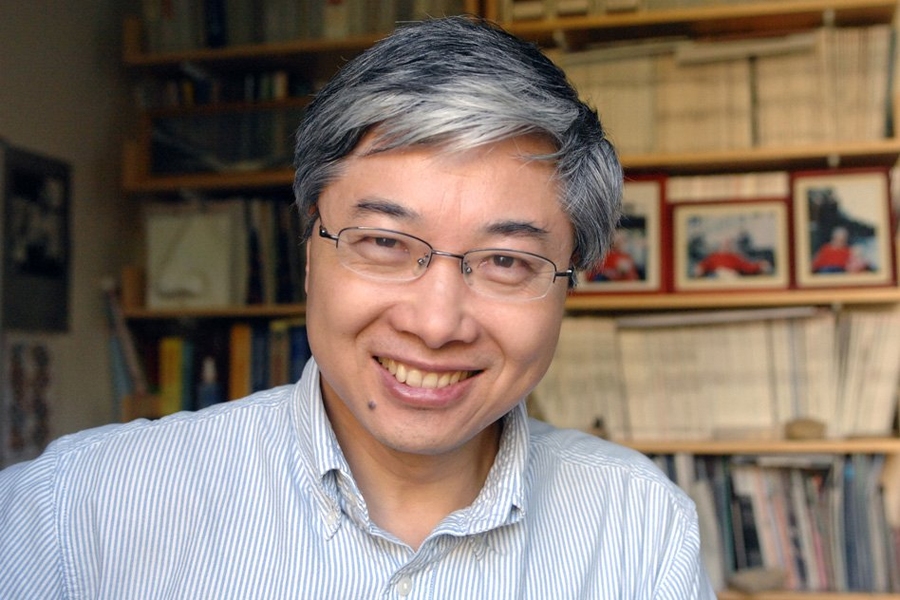In the early 1990s, MIT researcher Shuguang Zhang, then an MIT postdoc, stumbled upon peptides that could self-assemble into nanostructures, creating three-dimensional environments for cell culturing. It was, at the time, a breakthrough discovery.
But it wouldn’t be until a decade later, in a last-ditch effort to bring this discovery to the public, that these peptides would find commercial application through 3-D Matrix, a startup co-founded by Zhang and other MIT scientists.
Today, despite several business setbacks, 3-D Matrix has a market value of roughly $1 billion. It’s also a top biotech firm in Japan, where its new headquarters are located, and has the most-traded stock on the Tokyo Stock Exchange.
The company’s commercial product, PuraMatrix, launched in 2002, is a hydrogel made of amino acids (the building blocks of proteins) that self-assemble into nanofiber scaffolds in the presence of salt. Using the scaffolds generated by the hydrogel, scientists can grow and study cells in a 3-D environment more similar to a living organism than, say, a flat petri dish, which had been the most common medium for growing cells.
“It’s time to move away from technology that predates the past century,” Zhang wrote in a 2004 article published in the journal Nature Biotechnology. “Quantitative biology requires in vitro culture systems that more authentically represent a cell’s environment in a living organism. In doing so, in vitro experimentation can truly become more predictive of in vivo systems.”
PuraMatrix has the potential for use in surgical procedures; wound healing; 3-D cell culturing; sustained drug delivery; accelerated cartilage and bone growth; and regeneration of tissue and cardiac muscle. The product, Zhang says, which is nontoxic and harmless to humans, is helping scientists make the shift from two-dimensional to three-dimensional tissue cell-culture experimentation.
“Only a handful of scientists thought studying cells in 3-D structures was important when I first discovered it in the ’90s. Now, it’s almost universally understood as crucial for understanding cancer, stem cells, all of biology,” says Zhang, who first published a paper on self-assembling peptides in yeast in a 1993 issue of the Proceedings of the National Academy of Sciences, along with MIT co-authors Alexander Rich, a professor of biology, and grad students Todd Holmes and Curtis Lockshin.
To date, PuraMatrix has been used in more than 200 studies published in peer-reviewed journals, and for independent research. Last month, PuraMatrix received approval for clinical release across European Union countries.
Chasing curiosity
It all started with a serendipitous discovery: While studying a yeast protein sequence in Rich’s lab, Zhang and Holmes left rat cells out overnight in petri dishes, along with peptides. Expecting the cells to be dead in the morning, they were surprised to find that the cells were, in fact, thriving — which contradicted the scientific literature on the topic.
“That aroused my curiosity, so I chased it,” says Zhang, who is now a principal research scientist at the Center for Bits and Atoms at the MIT Media Lab. “That’s how it began. Curiosity is so important to scientific discovery.”
Securing funding from Rich, Zhang further manipulated the peptides and found he could use them as a substrate on which to grow cells in any pattern: He made them into rows, lines and bars, and even spelled out the letters “MIT.”
Recognizing the potential scientific applications of the material, Zhang and Rich met with MIT’s Robert Langer, an entrepreneurially minded Institute Professor, who recommended filing patents on the peptides through MIT’s Technology Licensing Office.
The patent was licensed to a large polymer and materials company, but after six years, that firm failed to develop the technology and the patents were returned to MIT. “That was the first near-death experience,” Zhang says.
So an MIT team — including Zhang and Rich — took matters into their own hands, co-founding 3-D Matrix in 2002. After an uncertain start — “the second near-death experience,” Zhang says — he hired Zen Chu, then a venture capitalist, as CEO and set up shop in Cambridge (later relocating to suburban Waltham).
Chu, who is now a senior lecturer at the MIT Sloan School of Management and an entrepreneur-in-residence at the Martin Trust Center for MIT Entrepreneurship, served as CEO for five years and helped usher PuraMatrix into the commercial market with only about $1.6 million in funding. But when U.S. investors did not continue investing, the company nearly fell apart, Zhang says.
In 2007, current CEO Keiji Nagano rescued the company, Zhang says, and moved its headquarters to Tokyo. The company has now raised $40 million in funding and employs roughly 40 people in four locations around the world.
The MIT co-founders say 3-D Matrix’s success can be attributed in large part to good science and strong leadership from Nagano, who took PuraMatrix through clinical trials. As CEO, Nagano and his top executives relinquished their salaries at some point just to keep the company afloat.
“For me, it was a very attractive business opportunity. When I came on, I was already confident in 3-D Matrix,” says Nagano, who was an early investor in the company. “I saw many, many applications for the technology … and wasn’t afraid to take risks.”
‘Innovation from all levels’
Another key to the company’s success is something Zhang calls “open-source innovation.” Although 3-D Matrix’s technology could have been kept in a lab or sold to a larger company — common practices among biotech companies — the co-founders freely distributed their material for experimentation.
“What biotechs do is they lock everything down and prioritize, but you don’t let people build on top of your key technology,” Chu says. But Zhang insisted upon open innovation by putting a product on the market and letting other people use it.
During the company’s early days, every time Zhang would speak at a conference, he’d bring 20 vials of PuraMatrix to hand out to any curious researcher. This helped boost early validation of the product: In the first year alone, the hydrogel was used in more than 40 studies of neurosurgery and tissue regeneration.
“It’s about innovation from all levels of invention,” Zhang says. “The more people who use your material, the more discoveries people can make and the more applications people can find. This was crucial to the company’s success.”
Nagano continued with the original open-source philosophy, freely distributing the materials to researchers in Japan, the United States and elsewhere, which contributed to the company’s success there.
Zhang, Chu, and Nagano say they can thank MIT, in part, for 3-D Matrix’s founding, having received entrepreneurial and scientific mentorship from the Institute’s professors and researchers, and from MIT’s Venture Mentoring Service.
Now, as part of MIT’s entrepreneurship culture himself, Chu notices how MIT inspires budding entrepreneurs to find commercial and practical uses for their innovations.
“It’s an engineering-driven culture,” he says. “Here, you focus on real-world impact. It’s a culture of making things, and that’s what’s unique and fantastic.”
MIT researcher Shuguang Zhang’s nanofiber-scaffold technology became the foundation for a biotech company.
Publication Date:
Press Contact:

Caption:
Shuguang Zhang
Credits:
Photo: Donna Coveney
Related Topics
Related Articles






